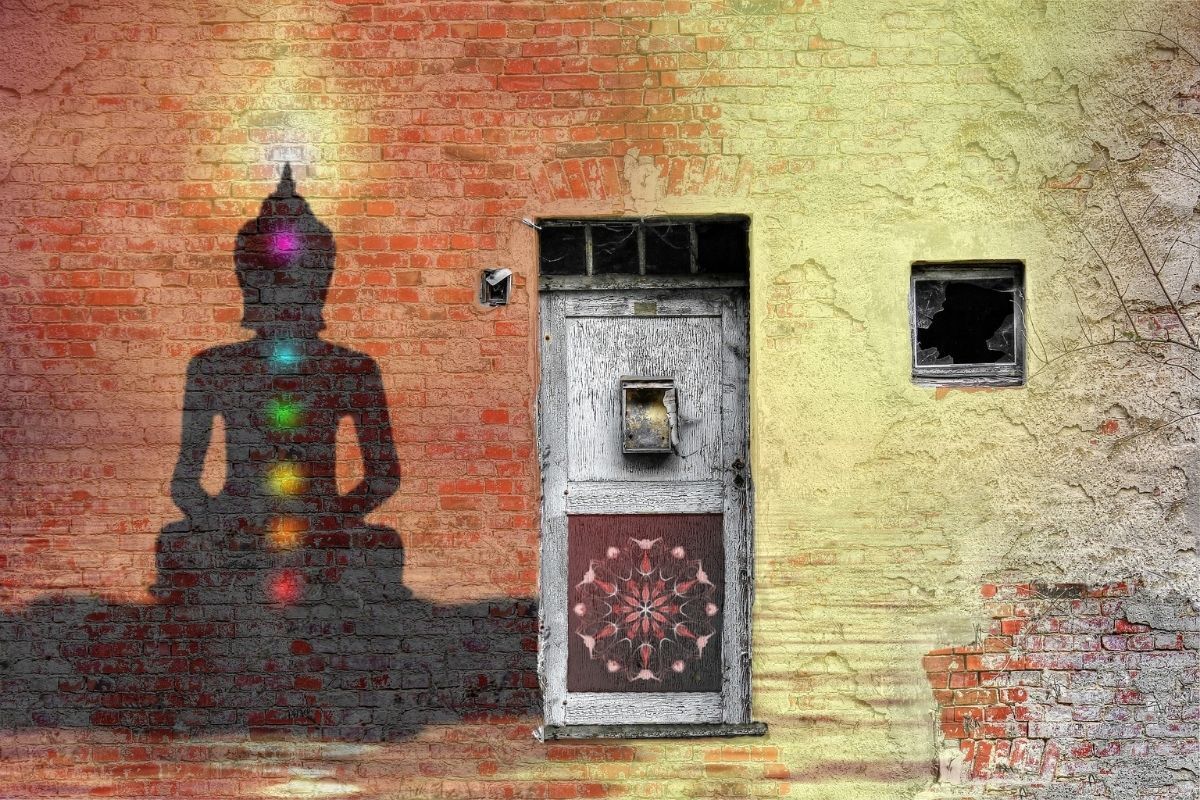Table of contents
Do you know the universal mantra Hari Om?

Mantras originated in Hinduism, but are found in a variety of religious practices, such as Buddhism and Jainism. Generally, they are syllables or poems that carry energy through their sounds.
Beyond any religious bond, chanting mantras brings several benefits to the body and mind. And one of the most performed mantras is Hari Om, known as the universal mantra that annihilates all suffering.
In this article, we will tell you more about the history, uses of Hari Om benefits and the main mantras that exist. Read on and understand more!
Hari Om, meaning, power and intonation

The Hari Om Mantra is used to eliminate suffering and reach ultimate truth. In addition, by using the correct chanting, you can align your chakras and enjoy various benefits. Want to know more? See below!
The mantra Hari Om
Practitioners of the Hari Om mantra aim to reach a state of overcoming one's own body to the true self. Hari Om in turn became a basic version of another mantra, Hari Om Tat Sat, in which case "Om Tat Sat" translated from Sanskrit means "all that exists," "the ultimate reality," or "absolute truth."
This is the mantra indicated for those practitioners who wish to awaken the higher or true self, going beyond the physical body itself.
Meaning of Hari in Sanskrit
In Sanskrit, Hari represents one of the names of Ishvara, which is nothing more than the potency of the individual consciousness of the being. This word symbolizes those who are in search of enlightenment, thus removing all negative karmas from their life.
Soon, Hari would be representing "the one who takes away" or "the remover", this name is quite common in the Vedas, especially when referring to the absolute divine or the supreme being, capable of removing all the sufferings and sorrows of his followers.
This name also appears in Hindu mythology, in which Hari also symbolizes the goddess Vishnu, considered capable of removing the sins of her faithful.
Meaning of Om in Sanskrit
According to a fragment of the sacred scriptures that underlie Hinduism, the Mandukya Upanishad, it describes the mantra Om as the essence of the universe. This body is considered absolute, being the very representation of Brahman, or the absolute present.
Pronouncing this mantra would be like carrying the absolute truth of being, going beyond one's own body joining the world. Thus, whoever performs Om expands his consciousness and connects with the supreme truth of the universe, thus removing bad karma, suffering and sins.
Power and benefits of Hari Om Mantra
It is common to perform the repetition of this mantra in the form of meditation, which can also be called Hari Om meditation. It is able to activate your chakras and allow your kundalini energy to move through your spinal energy channel (or sushumna nadi).
The result of the energetic vibration of Hari Om meditation stimulates prana through your energy centers, aiding in the elimination of energetic blockages. There are also other benefits guaranteed by Hari Om mantra which are:
- Improved creativity;
- Attenuates anxiety and depression;
- Stimulates positivity;
- It improves the feeling of contentment and happiness;
- It allows you to elevate your consciousness.
Using Hari Om in daily practice
You can enjoy all the benefits of this mantra by including it in your daily life. With daily practice and repetition of the mantra Hari Om, you will experience an improvement in your thought processing ability and greater emotional balance, as well as providing a state of mind relaxation by improving your focus and concentration.
Another positive function of the mantra Hari Om is in its ability to mobilize the energies of the chakras so that you find energetic balance in your energy centers. It is believed that the sound of Om is a powerful tool to trigger these energies and create a positive internal reaction in search of this balance.
Therefore, it is recommended that you use it daily, because by repeating the mantra during your day, you will be connecting with the supreme truth and tuning your energy vibration. Which will produce a positive energy field and enable you to stay in your mood and well-being.
The best way to chant Hari Om
Generally, the chanting of Hari Om mantra, or Hari Om Tat Sat, should be performed seated while preserving the spine straight and stable. For this, you may replicate the lotus posture (lotus posture) or the easy posture (sukhasana).
Moreover, it can be chanted in two ways, internally or out loud and the sound should be practiced with the focus on the vibration, so you will be able to maintain your concentration. You can also use mala beads, they are useful to count each recited mantra, usually they have in one round 108 repetitions.
Hari Om and yoga
The advantage of chanting a mantra is that it can be done by anyone, and it produces a total relaxation effect on the body and mind. That is why it is often used by meditation or yoga practitioners.
In fact, practicing yoga after chanting a mantra enables the person to reach the state of total connection between body and mind much more easily, that is, incorporating the chanting of the mantra before activities actively contributes to your yoga practice.
By using both, you are warming up your physical and mental condition to establish a faster connection with your consciousness and amplify the effects of your yoga practice. Therefore, you are also enhancing the physical and mental benefits of both mantra chanting and yoga.
Other Indian mantras for meditation

There are thousands of Indian mantras and each one carries with it a meaning and a power. Each mantra has its own vibration and consequently an effect on the physical body and mind. In this section we will introduce you to the most famous Indian mantras, how to chant them and what they bring to your life. Follow along!
Om Namah Shivaya
The mantra Om Namah Shivaya is considered one of the most powerful of the Vedas. Its chanting pays direct homage to the goddess Shiva, awakening the practitioner before his inner self the supreme truth that exists in every individual, and at the same time represents Shiva.
Om Namah Shivaya then means: "I invoke, honor and bow to my inner Self". The goddess Shiva symbolizes all the source of wisdom and absolute knowledge that is able to purify those who follow her. Therefore, the benefits of chanting this mantra are in the transformation and renewal of one's own being.
Its ability to change the energetic vibrations of the individual is what makes this mantra so powerful and justifies its use for millennia of years. For as Shiva acts to annihilate negative energies, she creates all that is positive for the spirit, mind and body.
Thus, by chanting this mantra you will be able to achieve enlightenment and eliminate your karma, thus allowing you to relax your mind, achieve spiritual balance, and attain nirvana.
Hare Krishna
Hare Krishna is an abbreviation of another mantra called Maha Mantra, this mantra consists of a love invocation or a prayer in respect to God Krishna. In Sanskrit "Hare" symbolizes the manifestation of the feminine of God, while "Krishna" represents "the one who is attractive".
One can understand, then, that Hare Krishna is a mantra capable of conceiving of a completely kind, loving and all-positive being that one can imagine. For, it is considered a strong invocation of this God.
So much so that in the millennial literature of the Indian Vedas the Krishna mantra is understood as "maha", which means "greatness, abundance and riches" or "happiness, joy and festivity". In this way, the Hare Krishna, also known as Maha Mantra, is conceived as "the great mantra of happiness".
Which makes it one of the best chants for purging negative thoughts, especially unhappy ones, from the consciousness of the one reciting it.
Follow the mantra in Sanskrit:
Hare Krishna, Hare Krishna,
Krishna Krishna, Hare Hare,
Hare Rama, Hare Rama,
Rama Rama, Hare Hare.
And its translation in Portuguese is as follows:
Give me the Divine Will, give me the Divine Will,
Divine Will, Divine Will, Give me, give me.
Give me joy, give me joy,
Joy, Joy, Give me, give me.
Each of the 16 words of Hare Krishna manifests the energy center located in the throat, which is known as the first chakra ray and of all divine will.
Om Mani Padme Hum
Om Mani Padme Hum is the most commonly used mantra by Tibetans and is considered the mantra of compassion. To understand its potent meaning, one must analyze each word of the mantra.
Om" is the essence of the universe, the beginning of everything and consciousness itself, while "Mani" is the jewel of compassion, and "Padme" is the lotus flower, which is born out of darkness and mud and yet flourishes.
Finally, "Hum" is the mantra of cleansing and liberation. Thus, Om Mani Padme Hum, which is pronounced "Om Mani Peme Hung" means "Oh! The Jewel of the Lotus!" or "from mud springs the lotus flower".
Mangala Charan Mantra
Mangala Charan Mantra is known as happy feet mantra due to the positive energy it emanates. Those who chant this ancient mantra automatically feel the change in their energy pattern and joy vibrating in their life.
In addition, it is also considered the mantra of protection and is great for balancing mood. The mantra and its pronunciation are:
Aad Guray Nameh (Aad Gure Nameh)
Jugaad Guray Nameh (Jugaad Gure Nameh)
Sat Guray Nameh (Sat Gure Nameh)
Siri Guroo Dayv-Ay Nameh (Siri Guru Dev E Nameh)
And its translation is:
I revere the Initial Wisdom
I revere the True Wisdom through the ages
I revere the True Wisdom
I revere the Great Invisible Wisdom
Gayatri Mantra
Gayatri Mantra is dedicated to goddess Gayatri and is known as the mantra of prosperity. By using spiritual light, it opens a portal of riches and mental enlightenment. In addition, this mantra relaxes tired and stressed minds, allowing thoughts to flow more clearly. The mantra and its pronunciation are:
Om Bhūr Bhuva Svar (Om Burbu Vaa Suaa)
Tat Savitur Varenyam (Tatsa Vitur Varenn Iammm)
Bhargo Devasya Dhīmahi (Bargooo De Vassia Dii Marriiii)
Dhiyo Yo Nah Prachodayāt (Dioioio Naa Pratcho Daiat)
And its translation is as follows:
O Goddess of life who brings happiness
Give us your light that destroys sins
let your divinity permeate us
and can inspire our minds.
More information about Indian mantras

Mantras are any sound used for meditation. They have an ancient history and their benefits have even been verified by science. Learn how mantras spread from India to the world and more in this section!
Origin and history
Mantras have an Indian origin and were found in the Vedas, which are the sacred books of Hinduism. Compiled from 3000 BC, the Vedas are made up of sutras, which are like treatises, where thousands of mantras are found.
These mantras talk about how to communicate with the gods and attain love, compassion and kindness, and aid in meditation practice. Over the years, mantras have spread to other places and religions, and have been adopted by Chinese, Tibetan and other Buddhisms.
General meaning of mantras
The word mantra is derived from Sanskrit and is formed by the elements "man", which means "mind", and "tra" which means "control" or "wisdom". Thus, mantra brings the meaning of "instrument of mind conduction".
Thus, a mantra is a word, poem, hymn, syllable, or any other sound that is chanted for ritualistic or spiritual purposes, in order to aid meditation, communicate with the gods, or even for self-knowledge.
Benefits of Mantras
According to scientific researches, the practice of chanting mantras extrapolates the religious benefits. It is possible, through mantras, to release endorphins, regulate the cardiorespiratory rate, regulate blood pressure and drive away negative thoughts and anxiety.
Generally, mantras are recited aloud with the help of a japamala, which is a necklace of 108 beads resembling a rosary. That way, one can concentrate only on reciting the mantra, without needing to count how many times one will chant.
In this practice, concentrating on a single activity helps regulate the rhythm of the breath, bringing an immediate sense of tranquility. For people with anxiety or depression, chanting mantras helps empty the mind of fears and worries.
For those who perform, or would like to perform meditations, mantras also help in concentration, as they prevent the mind from wandering and losing focus on the present.
Vedic Teachings
The Vedic teachings are taken from the Vedas, the holy scriptures of Hinduism. These mantras drive the entire Hindu culture, not only in religious aspects but also in daily practices.
The Vedic tradition is one of the oldest religious systems in the world and is based primarily on respect for ancestors and attachment to the gods. These ritualistic texts have inspired thousands of religious currents which, despite their differences, follow Vedic teachings.
Energetic sounds
As seen, the mantra can be a simple syllable, or the set of several of them forming words, phrases, poems, or even hymns. The benefits are achieved through the energy that each element of the mantra transmits.
This energy is generated through sound, which is an energetic vibration. Thus, for Hindus, the daily pronunciation of mantras is a way to activate divine qualities through the energy emitted by sound.
Relationship between mantras and chakras
Chakras, in Sanskrit, mean wheel or circle. There are seven chakras and they are considered to be energy centers that must be balanced and aligned for good physical, mental and spiritual health.
In this sense, mantras act in the regulation of the chakras, helping to correct energetic problems in them. It is possible to chant specific mantras for each chakra, depending on where the problem is, or to perform a complete ritual of Bija Mantras, aiming to align all the chakras, from bottom to top.
How can Indian mantras help in your daily life?

We are made up of energy. In Hinduism, this vital energy is called prana, which flows through our body through channels and accumulates in energy centers called chakras. Any misalignment of the chakras can bring not only spiritual, but also physical and mental consequences.
In this way, you use mantras to achieve the energetic balance necessary for a good quality of life. In addition, through mantras you can reach deeper meditative states, eliminate insecurities and worries and thus feel better.
Now that you know the practice of chanting mantras, find the one that best fits your current moment, find a quiet place and start chanting them. With practice you will see the benefits!

